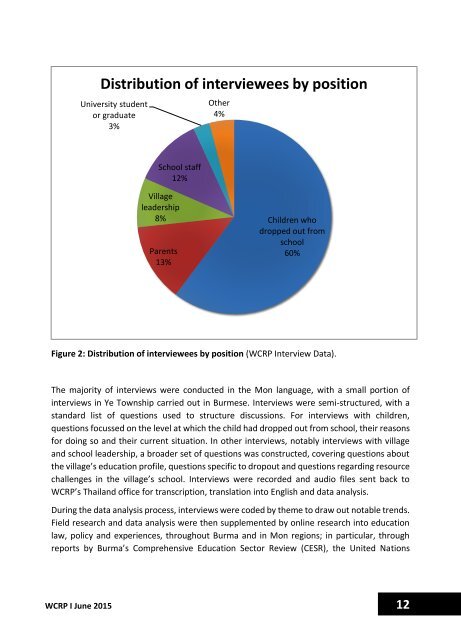Final-Edition
Final-Edition
Final-Edition
You also want an ePaper? Increase the reach of your titles
YUMPU automatically turns print PDFs into web optimized ePapers that Google loves.
Distribution of interviewees by position<br />
University student<br />
or graduate<br />
3%<br />
Other<br />
4%<br />
School staff<br />
12%<br />
Village<br />
leadership<br />
8%<br />
Parents<br />
13%<br />
Children who<br />
dropped out from<br />
school<br />
60%<br />
Figure 2: Distribution of interviewees by position (WCRP Interview Data).<br />
The majority of interviews were conducted in the Mon language, with a small portion of<br />
interviews in Ye Township carried out in Burmese. Interviews were semi-structured, with a<br />
standard list of questions used to structure discussions. For interviews with children,<br />
questions focussed on the level at which the child had dropped out from school, their reasons<br />
for doing so and their current situation. In other interviews, notably interviews with village<br />
and school leadership, a broader set of questions was constructed, covering questions about<br />
the village’s education profile, questions specific to dropout and questions regarding resource<br />
challenges in the village’s school. Interviews were recorded and audio files sent back to<br />
WCRP’s Thailand office for transcription, translation into English and data analysis.<br />
During the data analysis process, interviews were coded by theme to draw out notable trends.<br />
Field research and data analysis were then supplemented by online research into education<br />
law, policy and experiences, throughout Burma and in Mon regions; in particular, through<br />
reports by Burma’s Comprehensive Education Sector Review (CESR), the United Nations<br />
WCRP Ι June 2015<br />
12


